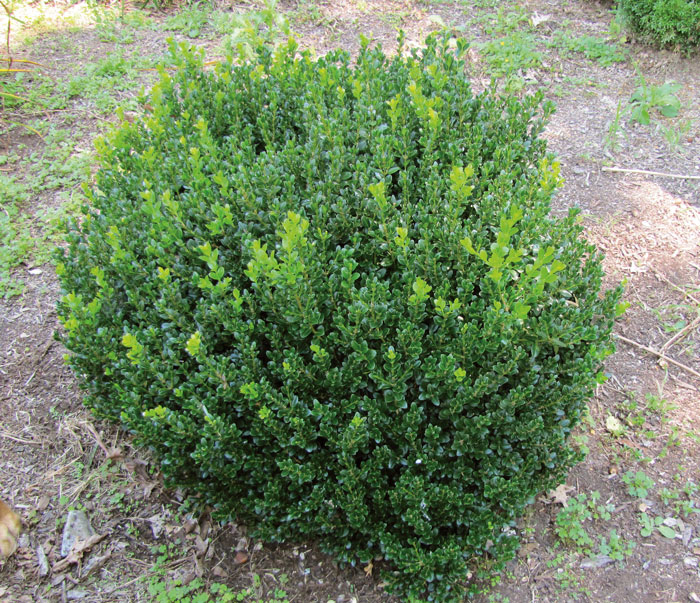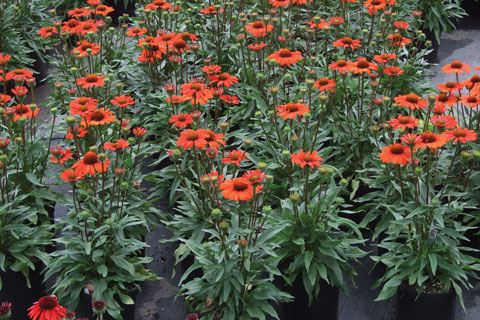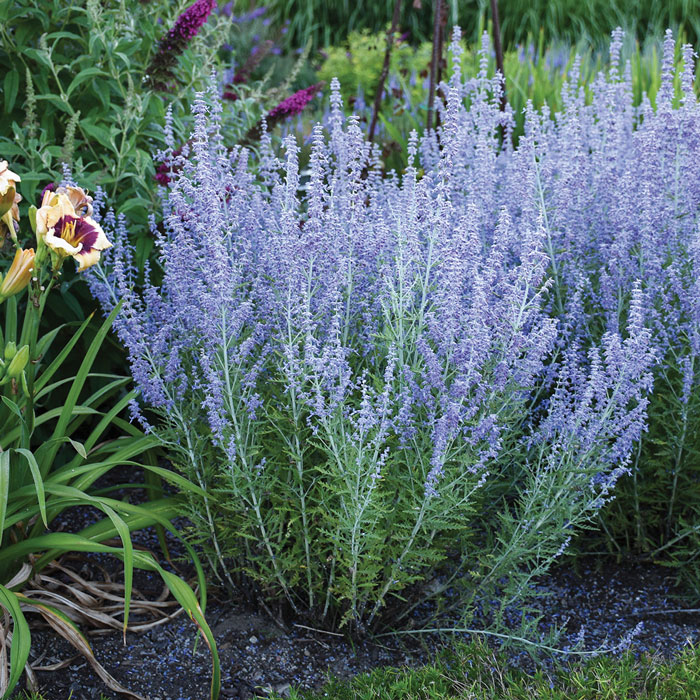10/1/2019
Improving the Odds
Paul Westervelt
Almost all growers play a high stakes game called “New Plants.” New plants drive sales—they’re hot, get lots of press, make happy customers and enjoy less price sensitivity. Everyone’s upbeat and hopeful because no one’s failed with them yet. When you hit it right, you look like a genius. When you get it wrong, you can get it very wrong. That beautiful new marketing image never reveals disease susceptibility, ground vs. pot performance—or the worst—that the variety will bulk beautifully all season, building expectations, only to see the majority die over winter in production or in the garden.
Trials separate the best from the rest, but how do you do it fast enough to be relevant? If you’re lucky enough to live in an area where they exist, you can visit multiple in-ground trials, but most established trials are overwhelmingly annual, which doesn’t address the increasing interest in perennials or woodies. And while visiting trials can tell you a lot, it’s a snapshot in time offering little to no explanation of why it looks as good or as bad as it does on that day.
An active spray program, attentive caretaker or just one bad irrigation break on a weekend can paint an unfair picture one way or the other. In-house trials tell you more about each variety’s assets and liabilities because you live them, but pot performance doesn’t correlate well to ground performance. A surprising number of perennials perform wonderfully in the pot, but … less so in the ground. (I’m looking at you, coreopsis.)

The best of the test
A group of like-minded growers in the relative northeast (Ontario to Virginia and west to Ohio), five in all, decided to collaborate to improve our odds. We all trial in production and in the ground, and on the same relative timeline, tracking the trials on shared software and comparing notes, resulting in much more data in the same timeframe. We track uniformity, bloom quality and duration, foliage quality, pest and disease resistance, hardiness, and overall performance at regular intervals throughout the growing season in the pot and in the ground.
Pictured: Buxus Little Missy.
Samples of varieties that make the first cut are sent to participating IGCs (over 200 so far) to get their feedback on what works or doesn’t work for them. It all results in the best of the best being certified Handpicked For You. It’s a trust mark—not a brand—an overlay award that says this will reliably work in your immediate region. Here are a few of the reliably exceptional perennials and woodies we’ve identified for our region:
• Boxwood have gotten plenty of negative press in the last few years due to Boxwood Blight, which makes it all the more enjoyable to celebrate Buxus Little Missy bred by West Virginia nurseryman Norman Cole. Little Missy is extremely tolerant of Boxwood Blight and is also naturally resistant to boxwood leaf miner. It’s delightfully compact at 2 ft. x 2 ft., thrives in full sun to full shade and sailed through -18F without injury.
• There are so many bigleaf hydrangea on the market that it takes a real standout to …well … stand out. In this case, it took an explosion. Hydrangea macrophylla Cherry Explosion is hardy to USDA Zone 4 and is a reliable bloomer even when it dies back to the ground. After a particularly rough winter in our trials, we were surprised to see the new growth emerging from the ground already had flower buds. By June, this 4 ft. x 4 ft. mound explodes into bloom with unusually large, cherry-red lacecap flowers. The bright cherry color is best with a higher pH, but can be forced purple in more acidic locations.
• Like hydrangeas, there are a lot of beautiful roses on the market, and as long as they’re not virused, they largely all look good in production. Consumers want problem solvers in addition to beauty and that’s a much tougher order to fill. Rose True Bloom True Passion from Altman Plants comes through on both counts. The vibrant orange-red, fully double flowers keep coming and coming—they don’t cycle. And the foliage shows truly impressive blackspot resistance, even in the multi-year, no- spray trials at Swarthmore’s Scott Arboretum.
 Pictured: Echinacea Kismet Intense Orange.
Pictured: Echinacea Kismet Intense Orange.
• Since 2002, when Jim Ault first showed that Echinacea purpurea and E. paradoxa could make colorful babies, breeders released scores of beautiful cultivars—the majority of which sold like gangbusters, but failed in the landscape. I don’t know if “echinacea burnout” is an official thing, but I know I grew numb to new releases for a while. I’m happy to report our group trials show breeders have turned the corner and we now have varieties that are both grower-friendly and reliable landscape performers. While there are too many to list, two standouts are Kismet Intense Orange from Terra Nova and Sombrero Lemon Yellow Improved from Darwin Perennials. Both have multiple breaks at the crown, making a full plant in production and both overwinter admirably in the ground.
• The Helleborus Frostkiss series doesn’t bulk as quickly for growers as some other series in the industry, but the finished product is reliably worth the wait. We certified four cultivars in the series for 2020: Anna’s Red, Penny’s Pink, Glenda’s Gloss and Dorothy’s Dawn. The first of the series, Anna’s Red was an “impossible” cross by Rodney Davey, resulting in a previously unseen combination of large, dark reddish-purple flowers, stunning marbled foliage and a robust habit. The marbling to the foliage is pink on young growth, quickly turning silver as the leaf matures. Mature plants can easily reach 18-in. high and 24-in. wide with 50 or more open flowers.
 Pictured: Perovskia Blue Jean Baby.
Pictured: Perovskia Blue Jean Baby.
Penny’s Pink boasts dusty rose-colored flowers on the same stunning foliage as Anna’s Red. Glenda’s Gloss takes the flower show a step further with a wide raspberry margin that bleeds into the white petals. Dorothy’s Dawn is the latest in the series to bloom (March or later) and has sublime light pink flowers, but the foliage show cranks up with wide, light pink veins that turn silver and then light green as the leaves mature.
• Some genera get lots of love from breeders, while others seem to stand on the edges of the dance. Perovskia was a wall flower until just a few years ago when several breeders all seemed to pick it up at once. The first new intro to rise to the top of our trials was Perovskia Blue Jean Baby from Walters Gardens. The reliably compact habit and fine foliage are lovely, but it’s the slightly earlier bloom time—two weeks ahead of the staples—that separated it from the pack. Like all perovskia, it still requires vernalization to be reliably upright from plug production.
• Every now and again, a plant comes along that changes the standard and it seems carex has had more than its fair share of those recently. First, Carex Evercolor Everest dazzled and impressed with its striking white variegation on tidy mounds of evergreen foliage. A hot second later, the super-sized Carex Feather Falls takes that same look up several notches. The original marketing material claimed it was only 12- to 18-in. tall by 18- to 24-in. wide, but our trials reveal it to be every bit of 3-ft. wide after only two years in the ground from a true gallon. This vigorous evergreen clumper is great for shade, as you’d expect, but also grows well in full sun without burning (at least as far south as Virginia). It’s hardy to at least -20F, and like all carex, it’s deer resistant. GT
Paul Westervelt is Chief of Container Operations for Saunders Brothers, Inc. in Piney River, Virginia.